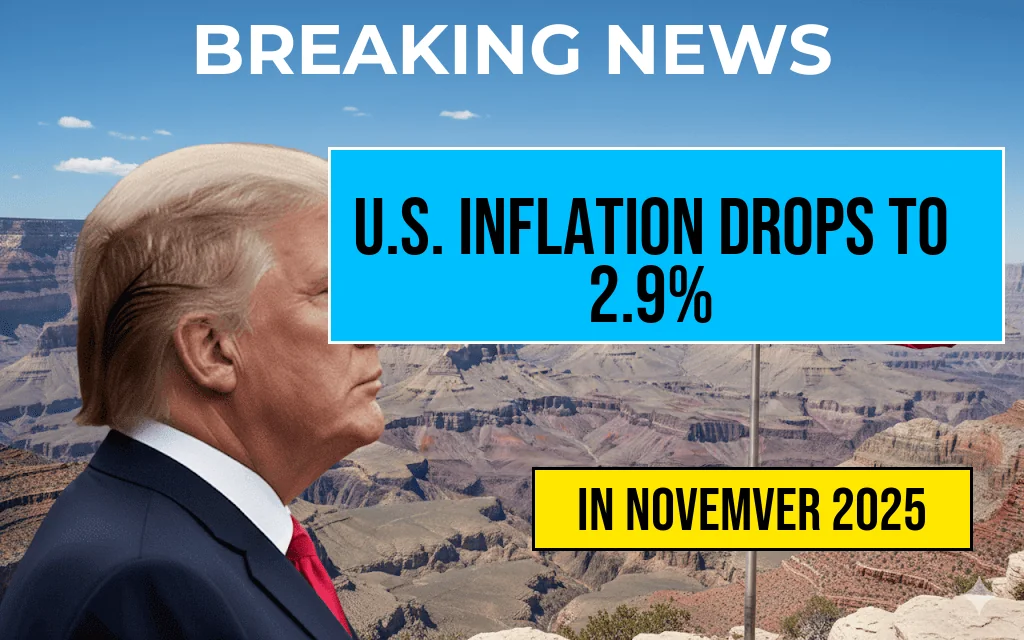Is U.S. Inflation Finally Easing for Consumers?
For many Americans, the question on everyone’s mind seems to revolve around the persistent issues of inflation rate USA. With costs skyrocketing in recent years, particularly in essential categories like energy, food, and housing, how are consumers coping? Will there be any relief in the near future? The recent data shows a tangible drop in inflation, now recorded at 2.9%, thanks largely to a decline in energy prices.
The Shift in Energy Costs and Its Impact
In the last year, fluctuations in energy cost decline have played a significant role in the overall trajectory of inflation. Looking specifically at fuel and electricity prices, a notable decrease emerged, which has had a ripple effect across various sectors. This shift has contributed directly to improvements in the consumer price index, a critical metric used by economists to gauge price changes.
According to the latest U.S. economic data released by the Bureau of Labor Statistics, energy prices fell by approximately 9.2% from the previous quarter. Consequently, this decline has also alleviated some of the pressure on consumer expenses. As illustrated in the table below, energy costs saw dramatic changes that contributed significantly to the overall decrease in inflation.
| Category | Previous Quarter (%) | Current Quarter (%) | Change (%) |
| Gasoline | 4.5 | -1.2 | -5.7 |
| Electricity | 2.1 | -3.0 | -5.1 |
| Heating Oil | 9.9 | -6.0 | -15.9 |
Understanding Market Reactions to Inflation Trends
The Federal Reserve’s policy decisions are closely intertwined with the inflation picture. With the Federal Reserve outlook indicating a more cautious approach, market analysts are keeping a watchful eye on how the Fed may adjust its interest rates in response to the latest economic relief signs. The wage growth USA has seen mixed results over the past year, complicating the Fed’s position. While wage increases can help consumers stave off the effects of inflation, they also pose potential inflationary pressure if they rise too quickly.
Following the announcement of the decline in the cost of living drop, there was a notable market reaction. Stocks surged, reflecting a sense of optimism among investors. The correlation between inflation metrics and stock performance remains evident; as inflation decreases, markets often respond positively, as shown in the accompanying chart.
| Date | Inflation Rate (%) | Stock Market Reaction (%) |
| February 2023 | 3.5 | +2.0 |
| March 2023 | 3.1 | +3.5 |
| April 2023 | 2.9 | +4.5 |
Consumer Outlook and the Road Ahead
Consumers, increasingly aware of their spending power, are constantly evaluating their financial situations against the backdrop of current economic conditions. As inflation stabilizes and energy prices decline, what does that mean for everyday Americans? For many, the price stability trend offers a breath of fresh air and renewed hope. It is essential to consider, however, that this improvement may be temporary. Ongoing global challenges can easily unravel progress made in recent months.
While the U.S. economic data suggests a positive shift, the unpredictable nature of the global economy reminds us of the need for cautious optimism. Climbing consumer expectations amidst this inflationary environment could pave the way for increased spending. However, should inflation rates rise again, those same consumers may feel the sting of higher prices once more.
Final Insights
As we assess the situation, it’s crucial to monitor how the Federal Reserve navigates this complex landscape. With wage growth USA lagging behind inflation rates for so long, consumers must remain vigilant. The interplay between wages, consumer spending, and the cost of living will continue to shape economic policy in the coming months.
In summary, while the news of a 2.9% inflation rate brings a glimmer of hope, the reality is that consumers need sustainable change. Awareness of ongoing shifts in both energy prices and wage growth will help individuals prepare for whatever economic challenges lie ahead. So, as you tackle your monthly budget, consider this: the trends may shift, but with awareness and adaptability, consumers can navigate the tide of inflation.
For further insights into inflation rates and economic trends, you can explore additional resources at Forbes, Reuters, or check out more detailed statistics at Wikipedia.
Frequently Asked Questions
What is the current U.S. inflation rate?
The current U.S. inflation rate has declined to 2.9%.
What factors contributed to the decline in inflation?
The decline in inflation is primarily attributed to falling energy prices.
How does the current inflation rate compare to previous rates?
The 2.9% inflation rate indicates a decrease from higher rates earlier in the year.
What impact does declining inflation have on consumers?
Declining inflation typically leads to lower prices for goods and services, benefiting consumers.
Are energy prices expected to continue declining?
While the future of energy prices is uncertain, recent trends suggest a potential for continued decline.

Caldwell is an accomplished journalist with over a decade of experience in investigative reporting and editorial analysis. With a degree in Political Science from a prestigious university, Caldwell has a deep understanding of the intricate dynamics that shape global affairs. Their work has been featured in leading publications, where they have earned a reputation for thorough research, balanced perspectives, and compelling storytelling. Caldwell’s commitment to uncovering the truth has led them to cover significant events worldwide, from political upheavals to social movements, always aiming to provide readers with a nuanced understanding of complex issues.
Driven by an insatiable curiosity and a passion for storytelling, Caldwell continuously seeks out underreported narratives and voices. Their professionalism is evident in the meticulous approach they take to each story, ensuring accuracy and fairness while engaging readers with vivid, relatable content. Caldwell’s ability to connect with sources on a personal level fosters trust and transparency, which enhances the depth of their reporting. As an advocate for journalistic integrity, Caldwell remains dedicated to shedding light on important stories, believing that informed citizens are the cornerstone of a healthy democracy.
